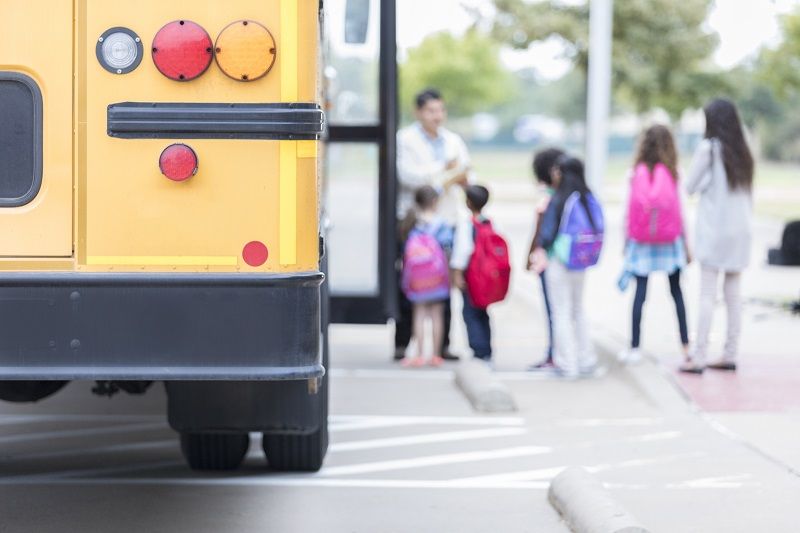David struggled in public school. His individual learning needs were not being met. Teachers were even concerned that he would “not ever be able to pass state test[s]” because of his learning disabilities, explains his mother, Naomi Handsaker. Yet, after “one year with ORCA [a virtual charter school] he has gone from that to passing all of his state test[s] and maintaining honor roll all year long!” Like Naomi, many families are raving about virtual schools. Yet, some powerful special interest groups would like to close these innovative schools.
Their weapon of choice? Senate Bill 767, which has passed Oregon’s legislature. In its original form, SB 767 would have killed many virtual charter schools in Oregon, depriving thousands of Oregon children of the public schools that have served their needs. After a loud outcry from parents and citizens alike (with even the Oregonian’s editorial board joining in), and after numerous cuts, SB 767 has been watered down.[1] Nonetheless, it will still sting – capping virtual school enrollment for a year until a task force can study how the legislature should regulate virtual charter schools and adding obtrusive red tape to the virtual schools’ requirements.
Capping virtual school enrollment is strange because since the legislative session began, legislators have complained about a dwindling state budget. Likewise, school districts across Oregon have laid off many teachers. Every level of government is complaining about a lack of funds. Yet, SB 767 would cap a substantial portion of the most economical form of public schools in Oregon.
In spite of the Oregon Education Association’s repeated claim that SB 767 is needed to “ensure that limited tax dollars aren’t going to advantage the few at the expense of the many,” virtual charter schools, like all charter schools in Oregon, cost only about half what it costs to educate a student in regular public school.[2] We spend around $10,000 per year to educate a child in ordinary public schools in Oregon.[3] But to educate a child in a charter school, we spend less than $6,000. Rather than preventing students from attending charter schools, we should encourage more children to attend the schools of their choice, to help with overcrowding in regular public schools. Increased charter school enrollment will cost the state fewer dollars and, accordingly, will allow more money to be spent per child in regular public schools.
Of course, cost is not the only factor. Countless parents’ stories, and improved state test scores, reveal that for many students, virtual schools are a life-changing solution. A recent study by the U.S. Department of Education found that “on average, students in online learning conditions performed better than those receiving face-to-face instruction.” The Oregon Education Association (OEA) has questioned the quality of virtual schools, but it has also affirmed the value of virtual education repeatedly. The parent of a virtual school child must closely monitor his own child’s education, because of unique requirements that the child have a learning coach, which also addresses the OEA’s concern that virtual schools are not transparent about spending.
As long as charter schools educate children well, how they spend their funds is irrelevant since they are less expensive than regular public schools to begin with. Parents protect their children and, given a choice, will find the best education for their children. They already have other options (like regular public schools). Quality will improve as parents choose among more virtual schools.
Unfortunately, one illogical Oregon state law requires that at least 50% of virtual charter school students live inside the district where the school is located, unless the school can obtain a waiver. As a result, some schools are inaccessible to many students. Since SB 767 also may result in the loss of these waivers, it could destroy competition among virtual schools, damaging their quality. But the freer the market, the more choices parents will have. Schools that provide the best education will come out ahead, while the others fail to survive. Accordingly, the legislature should lift the 50% cap from all virtual schools, to allow parents through the power of the market to work as de-facto regulators.
It may be true that there is an “equity of access” issue with virtual schools, as the OEA’s lobbyist has said (even though an abnormally high percentage of virtual school students qualify for free or reduced price lunch). Perhaps some children cannot attend virtual schools because their parents are not able to provide a “learning coach” as most virtual schools require. But the solution is not to limit everyone else’s choices (as SB 767 does), but instead to create more options for all students, especially the disadvantaged. More options can be made available in Oregon through education tax credits and other empowering legislation. And virtual schools, a valuable public school option, should be allowed to continue to grow and improve independently from increased (and needless) government interference. Voice your support for more school choice today by signing up as a supporter of the Oregon Education Tax Credit Coalition, and calling your legislators to tell them to lift restrictions on virtual school enrollment.[4]
[1]View SB 767 in its original form on the Oregon Legislature’s website at http://www.leg.state.or.us/09reg/measpdf/sb0700.dir/sb0767.intro.pdf; SB 767 as it now stands can be viewed at http://www.leg.state.or.us/09reg/measpdf/sb0700.dir/sb0767.b.pdf. Parents have been very outspoken against the bill (see, e.g., Edward Walsh, “Capitol Rally Supports ‘Virtual Charter Schools,'” The Oregonian, March 9, 2009, available at http://www.oregonlive.com/politics/index.ssf/2009/03/capitol_rally_supports_virtual.html.
[2] The OEA also has repeatedly said that it is supporting the bill to “ensure that limited tax dollars aren’t going to advantage the few at the expense of the many.” See, e.g., OEA, Virtual Schools Bill Gets Hearing, at http://www.oregoned.org/site/apps/nlnet/content2.aspx?c=9dKKKYMDH&b=5041339&ct=6928841.
[3] In 2003-04, taxpayers paid more than $10,000 per child for one year of public education, on average, including capital construction bonds. Matt Wingard, “How Much Does Oregon Spend Per Student?,” Cascade Policy Institute, April 16, 2008, available at https://cascadepolicy.org/2008/04/16/how-much-does-oregon-spend/. The Department of Education calculates expenditures a little differently but concluded that, on average, it cost more than $9,100 to educate each child in Oregon public schools in the 2006-07 school year. In contrast, charter schools’ funding is limited to ADM amounts.
[4] Visit www.OREDtaxcredit.com for more information.











